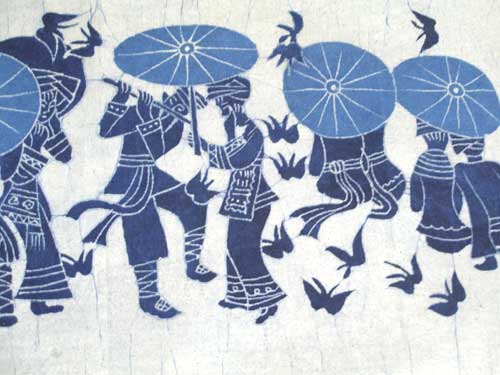Home> Culture
Batik
(chinadaily.com.cn)
Updated: 2015-01-07

Batik is a traditional printing and dyeing technique popular among China's western ethnic groups. It originated from the Spring and Autumn Period (770-476 BC) and Warring States Period (475-221 BC). In 1987, a colorful batik plait skirt weaved in the Song Dynasty (AD 420-479) was discovered for the first time in a local coffin cluster of the Miao ethnic group in a cave at Taohua village, Pingba county, Anshun.
Anshun has a reputation of being "the hometown of batik". Today, the Palace Museum displays an Anshun Miao-styled batik fan from the royal palace of the Qing Dynasty (1644-1911).
Anshun batik can be categorized into two types, wax painting and batik. Wax painting is made of beeswax dissolved by high temperature on copper Daojiao. It is used on white cloth to draw animals, plants, rivers and lakes freely. Sometimes abstract patterns are also adopted. The patterns are often filled in various colors.
The process of batik includes reserving, boiling, wax rinsing and painting. Batik is popular among Buyi and Miao women in Anshun. Miao patterns, like armor and writing, have historical significance. Batik cloth can be tailored into dresses, waistlines, bedclothes, back fans, curtain eaves, haversacks, hats and other fashionable items. In the 1980s, groups of wax painting masters like Yang Jinxiu were invited to Europe and the United States to demonstrate their weaving techniques, receiving praise from the international audience.

